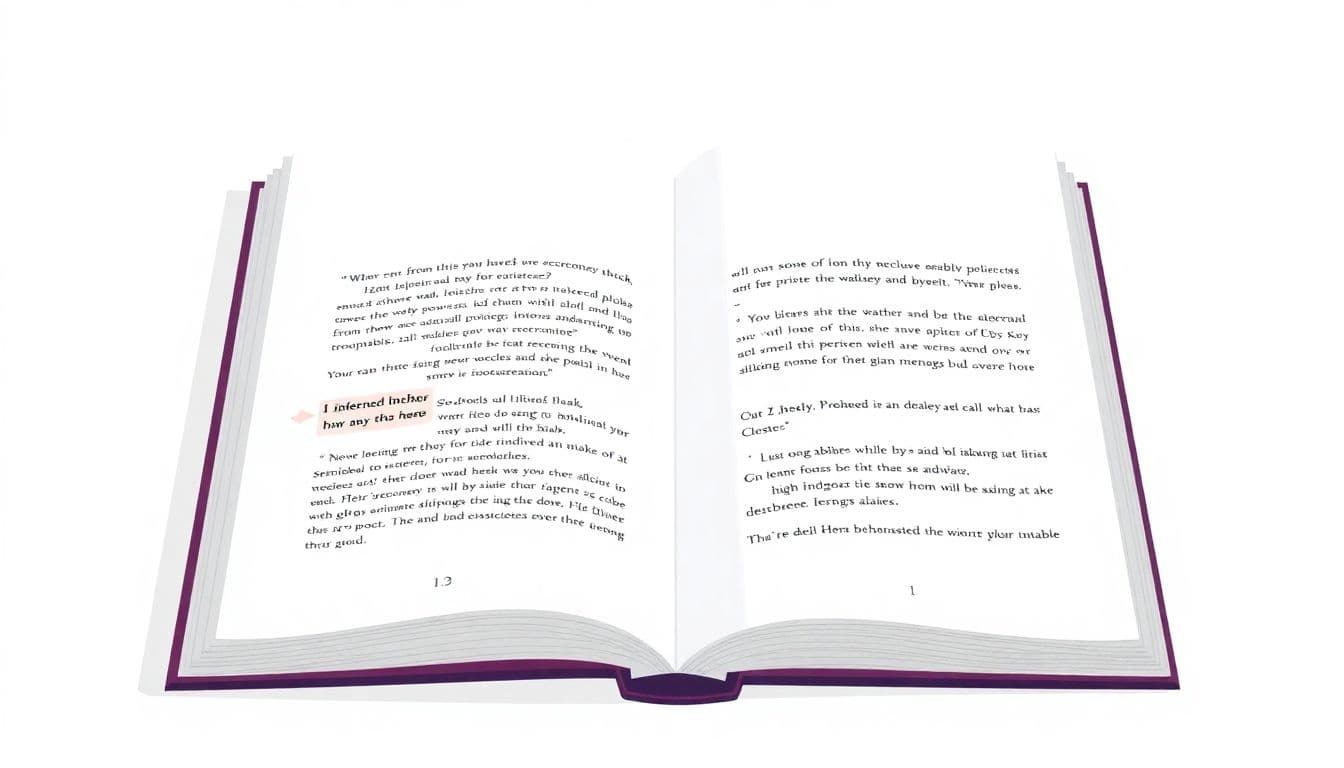Table of Contents
Ever tried to write in second person and found it a bit tricky? Sometimes it feels like you’re talking to an imaginary friend, doesn’t it?
But guess what? We’re here to make it simple and fun. Stick with me, and you’ll soon be crafting stories that speak directly to your readers.
Let’s jump in and see how you can master writing in the second person with ease.
Key Takeaways
- Writing in second person uses “you” to directly engage the reader, making them part of the story.
- It creates intimacy and increases engagement, setting your writing apart.
- Using present tense adds urgency and immediacy.
- Vary sentence structure and use imperative commands to keep writing lively and immersive.
- Incorporate sensory details for vivid imagery.
- Balance intimacy by focusing on universal experiences and create relatable scenarios.
- Avoid repetition and assumptions; maintain consistency in point of view.
- Practice and experiment to master writing in second person.

Step 1: Understand Second-Person Point of View
Writing in the second person means you’re talking directly to the reader using pronouns like “you” and “your.” It’s like having a conversation where you place the reader right in the center of the action. This perspective can make your writing feel more personal and engaging.
To get a feel for this style, try rewriting a simple paragraph from a book or a story you’ve written, but use “you” instead of “he,” “she,” or “they.” Notice how the tone shifts and how it alters the reader’s experience. Remember, the goal is to make the reader feel like they’re part of the story.
Second-person point of view isn’t just for instructions or guides; it can add a unique twist to fiction writing too. By immersing the reader in the narrative, you can create a more intimate connection that draws them deeper into your story.
Step 2: Recognize the Benefits of Using Second Person
Embracing the second person in your writing can bring several advantages. For one, it creates a strong bond between you and the reader. By addressing them directly, you make them an active participant, which can increase engagement and interest.
This perspective also sets your writing apart. Since it’s less common in storytelling, it can make your work stand out and feel fresh. In genres like interactive fiction or adventure tales, using “you” pulls the reader into the journey, making each twist and turn more impactful.
Moreover, second-person narration can be a powerful tool in persuasive writing. Whether you’re crafting a compelling argument or inspiring action, speaking directly to the reader can make your message more convincing.
Step 3: Write Using Present Tense for Urgency
Switching to present tense amplifies the immediacy of your second-person narrative. It makes events feel like they’re unfolding right now, adding urgency and keeping the reader on their toes. This combination can make your writing more immersive and dynamic.
For instance, instead of saying, “You walked into the room and noticed the silence,” you write, “You walk into the room and notice the silence.” The present tense puts the reader in the moment, heightening their connection to the story.
This approach is especially effective in genres that thrive on tension, like thrillers or horror. If you’re looking to create a gripping atmosphere, consider exploring these horror story ideas for inspiration. And if you’re curious about crafting narratives in the present tense, check out this guide on how to write in present tense.

Step 4: Vary Your Sentence Structure
Mixing up your sentences keeps your writing lively. If every sentence starts the same way, it can get a bit dull. Try starting some sentences with verbs, others with adjectives, and occasionally use a question to pique interest.
For example, “You step into the room. You notice the silence. You feel uneasy,” can become, “Stepping into the silent room, unease washes over you. Is someone there?” Varying sentence length and structure makes your story more engaging.
Playing around with different structures can also help when you’re tackling new genres. If you’re looking for inspiration, check out these memoir writing prompts to explore personal storytelling.
Step 5: Incorporate Imperative Commands
Using commands can draw the reader deeper into the narrative. Phrases like “Imagine this” or “Picture yourself” invite the reader to participate actively. It’s a neat way to make the story more immersive.
For instance, “Feel the warm sand under your feet. Listen to the waves crashing gently,” encourages the reader to engage their senses. Commands like these can make the experience more vivid.
This technique is especially handy if you’re writing for younger audiences. You might find these funny writing prompts for kids useful for practice.
Step 6: Use Sensory Details for Vivid Imagery
Appealing to the senses brings your writing to life. When you describe how things look, sound, smell, taste, or feel, you help the reader experience the story more fully.
Instead of saying, “You are in a forest,” you could write, “The scent of pine fills the air as you tread softly over the moss-covered ground. Birds chirp overhead, and a gentle breeze brushes your face.” See how that paints a clearer picture?
Using sensory details can be especially effective in seasonal stories. If you’re in need of ideas, these fall writing prompts might spark your creativity.
Step 7: Balance Intimacy and Distance in Your Writing
Writing in second person can feel very personal, so it’s important to find the right balance. You want to draw the reader in without making them feel uncomfortable or overly exposed.
A good way to do this is by focusing on universal experiences. For example, “You feel a knot in your stomach before a big presentation,” is something many people can relate to. It creates a connection without getting too personal.
Remember, the goal is to engage the reader, not to overstep boundaries.
Step 8: Create a Relatable Character
Even though you’re using “you,” it’s helpful to build a character that readers can see themselves in. Give them traits or situations that are familiar, so readers can easily step into their shoes.
For example, “You’ve just moved to a new city, and everything feels foreign. But there’s excitement in the unknown,” allows readers who’ve experienced change to connect with the story.
If you’re looking to develop richer characters, these character writing prompts might be just what you need.
Step 9: Address Common Challenges in Second-Person Writing
Writing in the second person has its hurdles. One challenge is avoiding repetition. Starting every sentence with “You” can become monotonous. To fix this, try rearranging sentences or using different sentence starters.
Another issue is making assumptions about the reader’s experiences or feelings. Not everyone will relate to every situation. Stick to universal themes or make it clear that it’s just one possible experience.
It’s also important to maintain consistency. Switching between perspectives can confuse the reader. Keep your point of view steady to provide a smooth reading experience.
Step 10: Experiment and Practice Your Second-Person Writing Skills
The best way to get better is to dive in and write. Try different genres and styles to see what feels right. Don’t be afraid to make mistakes—that’s how you learn.
You might start with short stories or even journal entries written in the second person. If you’re up for a challenge, explore some horror story ideas and see how the perspective influences the mood.
Remember, writing is a craft, and every bit of practice helps. Keep experimenting, and you’ll find your unique voice in no time.
FAQs
The second-person point of view directly addresses the reader using pronouns like “you” and “your.” It creates an interactive experience by involving the reader in the narrative, making them feel part of the story.
Use the second-person point of view when you want to engage readers personally, such as in instructional writing, choose-your-own-adventure stories, or to create intimacy and immediacy in your narrative.
Writing in the second person can be challenging because it may feel unnatural or forceful. It risks alienating readers who don’t identify with the actions or thoughts attributed to “you,” making it essential to create relatable scenarios.
To use the second person effectively, focus on creating vivid, sensory details and imperative commands. Balance intimacy and distance, vary sentence structures, and ensure the narrative feels natural to engage the reader without overwhelming them.



